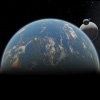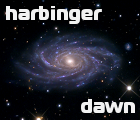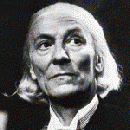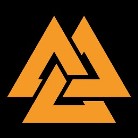|
MOD - Creating a Planet 0.95
|
|
| Talyn | Date: Friday, 27.04.2012, 15:33 | Message # 16 |
 Explorer
Group: Users
 Portugal
Portugal
Messages: 207
Status: Offline
| Thank you for the quick reply SpaceEngineer 
Hope there will be a 'good' way to do it in the future, maybe when atmospheric chemistry is added to te game.
I really would like to see planets that look like earth for example but intead of that familiar blue, maybe they could have a greenish tint  It would give a lot more variety to explore It would give a lot more variety to explore 
PC: Intel Core2Duo E6850 @ 3.00 GHz & 4GB DDR3 @ 1333 - NVIDIA GeForce 8800 GTS with 640 MB VRAM
Laptop: Intel Core2Duo T9400 @ 2.53 GHz & 4 GB DDR @ 1066 - NVIDIA GeForce 9600M GT
|
| |
| |
| SpaceEngineer | Date: Saturday, 28.04.2012, 01:28 | Message # 17 |
 Author of Space Engine
Group: Administrators
 Russian Federation
Russian Federation
Messages: 4800
Status: Offline
| Quote (Talyn) maybe they could have a greenish tint
Already done  http://en.spaceengine.org/forum/10-474-1 http://en.spaceengine.org/forum/10-474-1
Atmosphere color should be based on true scientific knowledge, like all other things in SE. Science says that for the human eye almost all dense atmospheres should have a blue color due to Rayleigh scattering. Only if atmosphere has a lot of liquid or solid particles floating in the air, it may have some tint defined by these particles. For example, Mars has red dust particles floating in the air, making martian skies pink. Titan has complex organic aerosols in a thick fog layer, that has an orange color. However, the upper atmosphere of Titan is still blue.
*

|
| |
| |
| Talyn | Date: Saturday, 28.04.2012, 12:41 | Message # 18 |
 Explorer
Group: Users
 Portugal
Portugal
Messages: 207
Status: Offline
| Can't wait for the next version 
PC: Intel Core2Duo E6850 @ 3.00 GHz & 4GB DDR3 @ 1333 - NVIDIA GeForce 8800 GTS with 640 MB VRAM
Laptop: Intel Core2Duo T9400 @ 2.53 GHz & 4 GB DDR @ 1066 - NVIDIA GeForce 9600M GT
|
| |
| |
| Warstorm | Date: Thursday, 03.05.2012, 16:19 | Message # 19 |
 Observer
Group: Newbies
 Canada
Canada
Messages: 9
Status: Offline
| First of all , i love you program , but now , I have a small problem , i created a Terra orbiting close to a Red dwarf but i want hit to be tidal lock to the sun , i stoped hit rotation but how can i can i make the hurricane like cloud and the frozen part of the planet , now , the only thing i got is a terra that didn't rotate but with the same cloud pattern that earth.
By the why , sorry if my english scorch your ear , my real language is french . 
|
| |
| |
| Kviki | Date: Sunday, 08.07.2012, 17:01 | Message # 20 |
 Explorer
Group: SE team
 Croatia
Croatia
Messages: 289
Status: Offline
| EDIT
Fixed issue with no custom planet appearing by adding NoPlanets true line at the bottom of the new star's paremeters. I'm so stupid! 
EDIT2
Fixed issue with no plants appearing by changing the plant colors to the one spaceengineer posted in the main post:
Code colorLowPlants (0.100, 0.160, 0.070, 0.000) // Color of lower vegetation
colorUpPlants (0.090, 0.110, 0.040, 0.000) // Color of upper vegetation
 
Edited by Kviki - Sunday, 08.07.2012, 18:00 |
| |
| |
| Kviki | Date: Sunday, 08.07.2012, 19:33 | Message # 21 |
 Explorer
Group: SE team
 Croatia
Croatia
Messages: 289
Status: Offline
| SpaceEngineer, can you please explain how colors work in parameters?
Example here: colorUpPlants (0.090, 0.110, 0.040, 0.000)
What does each of the numbers seperated by the comma represent?
 
|
| |
| |
| HarbingerDawn | Date: Sunday, 08.07.2012, 23:33 | Message # 22 |
 Cosmic Curator
Group: Administrators
 United States
United States
Messages: 8717
Status: Offline
| Quote (Kviki) What does each of the numbers seperated by the comma represent?
These are colors in RGBA format on a scale of 0-1. So 0.090 0.110 0.040 means 9% red, 11% green, 4% blue, which would look like this:

The fourth number is the value of the alpha channel (transparency, which does not affect the appearance of the texture) and is used for specular reflections. The default value for most parameters is 0.000, which is full transparency, which means no specular reflection (this is what you want). Only water should have specular reflection, and snow should have some small amount too.
The numbers are in the same format that is used for setting color in most image editing software, only instead of being 0-255 scale it is 0-1 scale. If you want to convert a specific RGB value into SE format, take the 0-255 value given, then divide by 255. For example, 54, 76, 68 becomes 0.212, 0.298, 0.267, yielding this color:

I hope this helps.
All forum users, please read this!
My SE mods and addons
Phenom II X6 1090T 3.2 GHz, 16 GB DDR3 RAM, GTX 970 3584 MB VRAM
Edited by HarbingerDawn - Monday, 09.07.2012, 13:37 |
| |
| |
| apenpaap | Date: Monday, 09.07.2012, 10:20 | Message # 23 |
 World Builder
Group: Users
 Antarctica
Antarctica
Messages: 1063
Status: Offline
| Are you sure you have to add one and divide by 256? Shouldn't you just divide by 255? It seems rather odd to have a value of 0 become 0.004 instead of just keeping it at 0. Though I suppose the difference would be miniscule.
I occasionally stream at http://www.twitch.tv/magistermystax. Sometimes SE, sometimes other games.
|
| |
| |
| HarbingerDawn | Date: Monday, 09.07.2012, 13:35 | Message # 24 |
 Cosmic Curator
Group: Administrators
 United States
United States
Messages: 8717
Status: Offline
| You're right, I messed it up... Major math fail on my part 
All forum users, please read this!
My SE mods and addons
Phenom II X6 1090T 3.2 GHz, 16 GB DDR3 RAM, GTX 970 3584 MB VRAM
Edited by HarbingerDawn - Monday, 09.07.2012, 13:38 |
| |
| |
| Hasforjs97 | Date: Friday, 13.07.2012, 21:18 | Message # 25 |
 Space Pilot
Group: Translators
 Spain
Spain
Messages: 107
Status: Offline
| I have a problem with barycenters. I have set all the parameters equal for the 2 planets (Except the sMA, which I calculated using that formula, and the ArgOfPericenter, that differs in 180 from a planet to the other). In the barycenter, the only parameters I have specified are the mass (which I calculating adding the masses of the two bodies), the orbit and the albedo & color which are the same for all the planets.
The problem is that when I open the game, the barycenter doesn't appear in the F2 system summary, and the planets are too farther than I specified in the script 
Here is my script, with the barycenter RaEniaK and the planets ARaEnia and DeRaEnia
Code
Barycenter "RaEniaK/Les Terres del Sol"
{
ParentBody "Ra'kast"
Class "Desert"
Mass 1.62
Albedo 0.3
Color (1.000, 1.000, 1.000)
Orbit
{
SemiMajorAxis 0.12
Eccentricity 0.05
Inclination 13.5
AscendingNode 169.1
ArgOfPericenter 161.1
MeanAnomaly 175.3
RefPlane "Ecliptic"
}
}
Planet "ARaEnia/La primera Terra del Sol"
{
ParentBody "RaEniaK"
Class "Desert"
Mass 0.83
Radius 6001.3
Albedo 0.3
Color (1.000, 1.000, 1.000)
Surface
{
Style 0.5595632
Randomize (0.455, -0.012, 0.987)
colorDistMagn 0.08386434
colorDistFreq 564.5532
detailScale 33522.32
colorConversion true
seaLevel 0.06246126
snowLevel 0.9913526
tropicLatitude 0.8317656
icecapLatitude 10
icecapHeight 0.1305878
climatePole 0.5571058
climateTropic 0.45
climateEquator 0.45
tropicWidth 0.07
mainFreq 0.9915567
venusFreq 1.434819
venusMagn 0.4028122
mareFreq 1.252732
mareDensity 0.2096301
erosion 0
montesMagn 0.1559781
montesFreq 264.3417
montesFraction 0.5734884
dunesMagn 0.05025767
dunesFreq 54.92299
dunesFraction 0.9613495
hillsMagn 0.127119
hillsFreq 452.7186
hillsFraction -0.9613495
hills2Fraction 0
canyonsMagn 0.04140922
canyonsFreq 135.7136
canyonFraction 0
cracksMagn 0.1328041
cracksFreq 0.4718492
cracksOctaves 0
craterMagn 0.6030409
craterFreq 12.51666
craterDensity 0
craterOctaves 0
craterRayedFactor 0
twistZones 6.393675
twistMagn 0
cycloneMagn 3.257335
cycloneFreq 0.7587435
cycloneDensity 0.0472567
colorSea (0.320, 0.240, 0.210, 0.000)
colorShelf (0.290, 0.220, 0.200, 0.000)
colorBeach (0.820, 0.740, 0.570, 0.000)
colorDesert (0.810, 0.640, 0.450, 0.000)
colorLowland (0.770, 0.580, 0.400, 0.000)
colorUpland (0.620, 0.330, 0.170, 0.000)
colorRock (0.220, 0.200, 0.200, 0.000)
colorSnow (1.000, 1.000, 1.000, 1.000)
colorLowPlants (0.770, 0.580, 0.400, 0.000)
colorUpPlants (0.620, 0.330, 0.170, 0.000)
BumpHeight 20
BumpOffset 4
DiffMapAlpha "Ice"
SpecularBright 0.3
SpecularPower 150
DayAmbient 0.07
Lommel 0
Exposure 2
}
Clouds
{
Height 71.24
DayAmbient 2
Lommel 0.2
Exposure 2
Color (1.000, 1.000, 1.000, 1.000)
mainFreq 2.594773
mainOctaves 10
Coverage 1
twistZones 6.812793
twistMagn 0
}
Atmosphere
{
Model "Venus"
Height 325.8
Density 73352.1
Pressure 189.0
Greenhouse 233.2
Bright 10
Opacity 1
SkyLight 3.333333
EclipseBright 100
EclipseColor (0.700, 0.500, 0.200)
}
Orbit
{
SemiMajorAxis 0.000134
Eccentricity 0.1
Inclination 0.0
AscendingNode 169.1
ArgOfPericenter 1.1
MeanAnomaly 175.3
RefPlane "Ecliptic"
}
}
Planet "DeRaEnia/La segona Terra del Sol"
{
ParentBody "RaEniaK"
Class "Desert"
Mass 0.79
Radius 5893.0
Albedo 0.3
Color (1.000, 1.000, 1.000)
Surface
{
Style 0.5595632
Randomize (-0.383, -0.264, 0.465)
colorDistMagn 0.08386434
colorDistFreq 564.5532
detailScale 33522.32
colorConversion true
seaLevel 0.06246126
snowLevel 0.9913526
tropicLatitude 0.8317656
icecapLatitude 10
icecapHeight 0.1305878
climatePole 0.5571058
climateTropic 0.45
climateEquator 0.45
tropicWidth 0.07
mainFreq 0.9915567
venusFreq 1.434819
venusMagn 0.4028122
mareFreq 1.252732
mareDensity 0.2096301
erosion 0
montesMagn 0.1559781
montesFreq 264.3417
montesFraction 0.5734884
dunesMagn 0.05025767
dunesFreq 54.92299
dunesFraction 0.9613495
hillsMagn 0.127119
hillsFreq 452.7186
hillsFraction -0.9613495
hills2Fraction 0
canyonsMagn 0.04140922
canyonsFreq 135.7136
canyonFraction 0
cracksMagn 0.1328041
cracksFreq 0.4718492
cracksOctaves 0
craterMagn 0.6030409
craterFreq 12.51666
craterDensity 0
craterOctaves 0
craterRayedFactor 0
twistZones 6.393675
twistMagn 0
cycloneMagn 3.257335
cycloneFreq 0.7587435
cycloneDensity 0.0472567
colorSea (0.320, 0.240, 0.210, 0.000)
colorShelf (0.290, 0.220, 0.200, 0.000)
colorBeach (0.820, 0.740, 0.570, 0.000)
colorDesert (0.810, 0.640, 0.450, 0.000)
colorLowland (0.770, 0.580, 0.400, 0.000)
colorUpland (0.620, 0.330, 0.170, 0.000)
colorRock (0.220, 0.200, 0.200, 0.000)
colorSnow (1.000, 1.000, 1.000, 1.000)
colorLowPlants (0.770, 0.580, 0.400, 0.000)
colorUpPlants (0.620, 0.330, 0.170, 0.000)
BumpHeight 20
BumpOffset 4
DiffMapAlpha "Ice"
SpecularBright 0.3
SpecularPower 150
DayAmbient 0.07
Lommel 0
Exposure 2
}
Clouds
{
Height 69.87
DayAmbient 2
Lommel 0.2
Exposure 2
Color (1.000, 1.000, 1.000, 1.000)
mainFreq 2.307683
mainOctaves 10
Coverage 1
twistZones 6.393675
twistMagn 0
}
Atmosphere
{
Model "Venus"
Height 312.56
Density 73352.1
Pressure 177.3
Greenhouse 217.4
Bright 10
Opacity 1
SkyLight 3.333333
EclipseBright 100
EclipseColor (0.700, 0.500, 0.200)
}
Orbit
{
SemiMajorAxis 0.0001408
Eccentricity 0.1
Inclination 0.0
AscendingNode 169.1
ArgOfPericenter 181.1
MeanAnomaly 175.3
RefPlane "Ecliptic"
}
}
My desktop:
Pentium G3260 @ 3.30GHz
8.0 GB DDR3
AMD Radeon HD 5570 1GB
|
| |
| |
| SpaceEngineer | Date: Saturday, 14.07.2012, 11:42 | Message # 26 |
 Author of Space Engine
Group: Administrators
 Russian Federation
Russian Federation
Messages: 4800
Status: Offline
| F2 menu doesn't show the barycenter of a binary planet - it shows the main planet and the secondary as its satellite. Refer to Earth-Moon and Pluto-Charon as an example.
*

|
| |
| |
| Hasforjs97 | Date: Saturday, 14.07.2012, 19:18 | Message # 27 |
 Space Pilot
Group: Translators
 Spain
Spain
Messages: 107
Status: Offline
| Well, this isn't my main problem. The problem is that I specified the two planets to orbit the barycenter at distances of 0,0001 AU, and they orbit at 0,1 AU...
Meanwhile I'm going to leave the small one as a moon and the big one as a planet, but it doesn't seem realistic...
EDIT: I have solved the problem with the distance. Now the two planets orbit the BC, but with different orbital periods (because they have different semiMajor Axises too)
EDIT 2: I have solved it all. I just looked at the orbital period of the moon and set it in the script for both bodies, so now the 2 worlds have the same orbital period around the BC and it works well.
My desktop:
Pentium G3260 @ 3.30GHz
8.0 GB DDR3
AMD Radeon HD 5570 1GB
Edited by Hasforjs97 - Saturday, 14.07.2012, 23:32 |
| |
| |
| Exacerangutan | Date: Sunday, 15.07.2012, 05:36 | Message # 28 |
|
Observer
Group: Newbies
 United States
United States
Messages: 1
Status: Offline
| I'm new to SE and really have no experience with it, to speak of, but I'd dabbled in star system design, before. Actually, it's sort of what got me into physics. Played with Celestia a lot, and more recently, Universe Sandbox, and I'm looking forward to seeing what SE can do that they can't. Quite a bit, from what I've read.
Anyway! I've been reading this thread, and I'm wondering if there's any possibility that there'll be in future versions a means of controlling--nudging, at least--the way a planet's surface features are distributed. Even something as quick-and-dirty as using a few Fourier components (just one, even!) as a multiplier on the random height map. I ask because I'd love to be able to control oblateness--or, conversely, make something like an equatorial trench ocean on a world with extreme tides. What I read doesn't make it sound like there's a way to do this, yet; please do correct me if I'm just missing it, though!
Anyway, looking forward to playing with this, and thanks for the guide to planet-creation! Very nice!
|
| |
| |
| HarbingerDawn | Date: Sunday, 15.07.2012, 08:26 | Message # 29 |
 Cosmic Curator
Group: Administrators
 United States
United States
Messages: 8717
Status: Offline
| Hello Exacerangutan, welcome to the forum.
The current version of SpaceEngine (0.96) does indeed have an interactive in-engine editor for tweaking the parameters of procedural planets. It may not be a precise as you're looking for, but with a little patience and practice you can get it to produce some landscapes closer to what you have in mind.
All forum users, please read this!
My SE mods and addons
Phenom II X6 1090T 3.2 GHz, 16 GB DDR3 RAM, GTX 970 3584 MB VRAM
|
| |
| |
| SpaceEngineer | Date: Monday, 16.07.2012, 13:13 | Message # 30 |
 Author of Space Engine
Group: Administrators
 Russian Federation
Russian Federation
Messages: 4800
Status: Offline
| SE uses fractal functions to distribute landforms on the planetary surface, it is impossible to replace it with user-defined texture. However, it is a good idea, it may be easy to implement. The hard part is to create such textures, some sort of in-game 3D brush editor required.
*

|
| |
| |